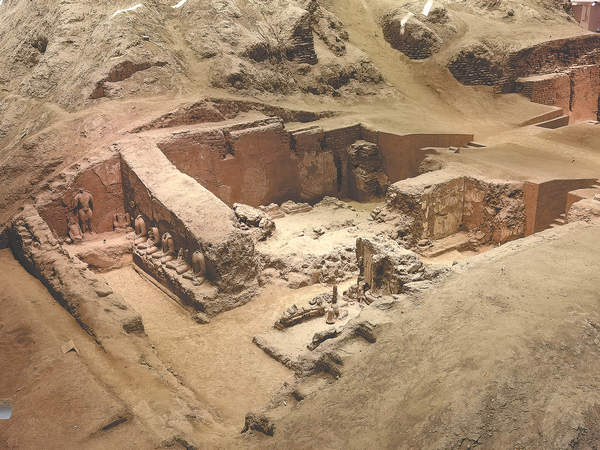

At the Husta archaeological site in Wenquan county in the Bortala Mongolian autonomous prefecture, archaeologists excavated a tin-bronze alloy knife that is considered one of the oldest bronze items found in China, and one of the earliest tin-bronze artifacts found on the Eurasian Steppe, according to State broadcaster China Central Television. Located on the homonymous grassland at the southern foot of the Alatau Mountains, the Husta site is a large-scale Bronze Age settlement that covers tens of square kilometers. The Alatau Mountains are part of the western Tianshan Mountains, which run east-west across Xinjiang into Central Asia.
The core area of the site covers around 12 sq km and consists of city ruins, cemeteries, surrounding military watchtowers and other remains, the majority of which date back around 3,600 years.
During a recent excavation, archaeologists found a large cemetery about 2 km southeast of the core area. It dates back 4,600 to 4,800 years, predating the core area.
It has a rectangular stone-enclosed burial mound whose stone enclosure measures 23 meters in length from north to south and 25 meters from east to west, with a height of around 1.2 meters and an orientation of nine degrees south of the west.
It is one of the earliest Bronze Age sites found so far in Xinjiang.
Previously, this style of mid-Bronze Age (2600-1800 BC) tomb was primarily found in the Altay Mountains in the far north of Xinjiang and about a 1,000 km drive from Wenquan county.
Meanwhile, similar tombs from the late Bronze Age (1800-1000 BC) have been found in both the Altay and the western Tianshan mountain regions.